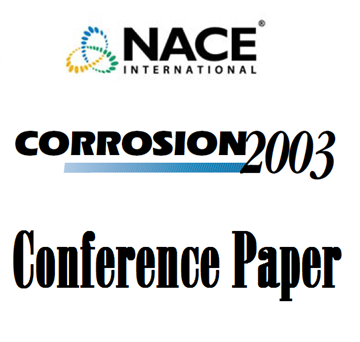This paper is to share with you an initiative to develop an online corrosion monitoring strategies to detect Corrosion Under Insulation (CUI). In order to ensure the integrity and reliability of oil and gas operating facilities to avoid undesirable consequences that might represent losses in monetary safety and environmental subjects.CUI is mostly experienced as local degradation mechanism with corrosion taking place at locations out of sight–very difficult to inspect where water that has penetrated the external cladding is trapped. Furthermore it is not possible to predict the life time for CUI to calculate the corrosion rate because the rate of attack dependent on the average rain fall water leaks conditions of protective coatings and presence of chemical species.Despite the fact that CUI was proven as age-related degradation mechanism from the oil and gas operating facilities experience In worst case scenario it is a random failure manifests itself to either general wall losses or pitting accumulated to a level that might lead to a catastrophic failure. Thereby if the time interval for the critical failure is very short preventive maintenance cannot be performed.23 out of 186 corrosion case-studies conducted with criticality assessment in Oil Stabilization Unit specially at sour environment found to be attributed to CUI random failures which manifests itself to pitting with maximum hole size of 3 mm. It is worth mentioning these pits in worst case scenario might generate a vapor cloud contains 9 to 11 H2S mole%. Consequently H2S cloud might cause a human fatality within a period varies from 2 to 30 minutes.Based on this fact in this paper three advanced inspection technologies will be demonstrated. All these technologies share the same concept which is inspecting piping CUI. Each one of them is viable to inspection hydrocarbon piping circuit with range of diameter limitation. Therefore these technologies can be adopted as low power Digital x-ray system was tested and it was showed successful results to approve that it is viable inspection tool for detecting Corrosion Under Insulation for a piping system with diameter less than or equal to 12”.However the main limitation of this system it provide uncertain results with high variation in crude oil piping circuits. To overcome this limitation the medium power digital X-ray system was tested and it was showed successful results to approve that it is viable inspection tool for detecting CUI for a crude piping system with diameter less than or equal to 8”.Finally the high power digital x-ray system showed successful results to approve that it is viable inspection tool for detecting CUI for a crude piping system with diameter less than or equal to 60”. Furthermore this system can be used as online corrosion monitoring technique for detecting the sludge level in large diameter pipeline such as the flare lines.In conclusion these technologies are considered as proactive corrosion control tactics to address the early sign of CUI failures i.e. by mitigating the H2S Leaks. Thereby enhancing the safety and reliably for the overall Abqaiq Plants operating facilities with no human fatalities.Key words: Oil Stabilization Unit CUI Criticality Assessment Inspection challenges Advanced X-ray Technologies Corrosion Control tactics H2S leaks mitigation.




